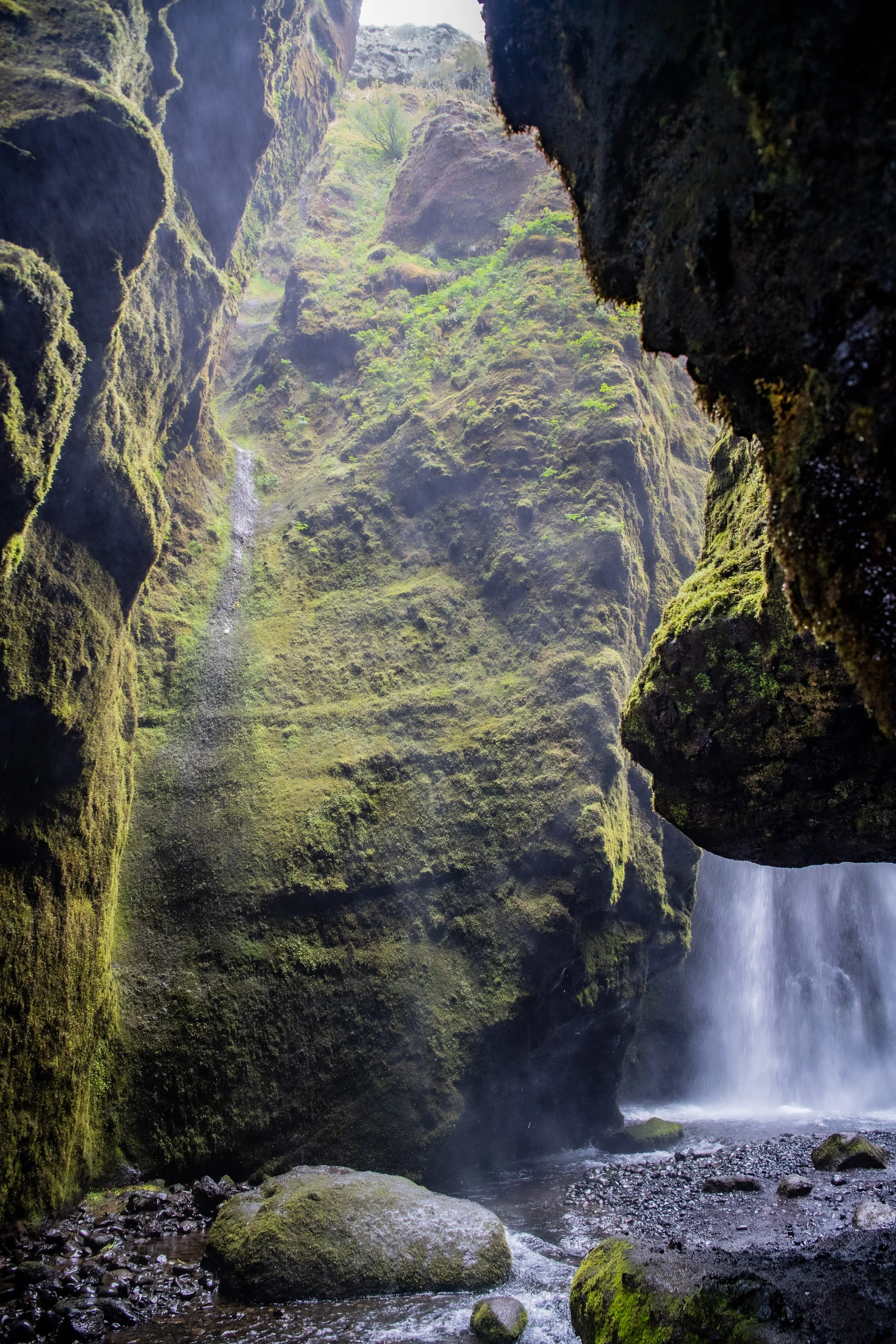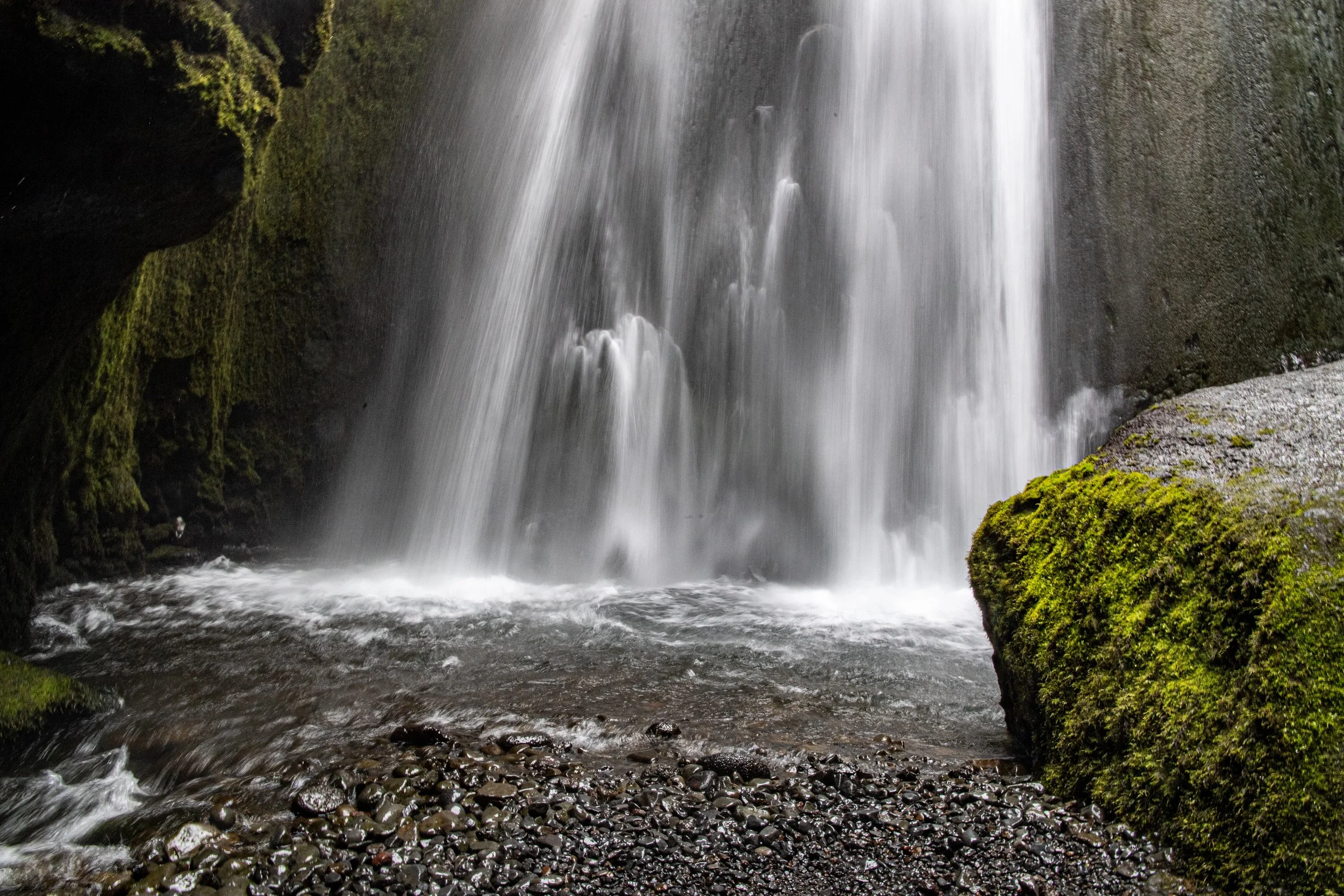Iceland: The South Coast Part 1 - Seljalandsfoss
Quiet morning at Seljalandsfoss
The next morning we departed early from Reykjavík and headed out along the south coast. Our first stop was the famous waterfall Seljalandsfoss (sell-ya-lands-foss). The parking lot was nearly empty on our arrival. Water from the highlands cascades over the nearly 200-foot high cliff, but the real attraction is the open space behind the falls that visitors can walk through. We geared up in our most water-resistant clothes and walked the short distance up the hill and into the spray of the falls. The view from behind the falls is stunning. Blue skies and verdant pastures set the backdrop of the falls and the pool. Bright green moss covers the rock surfaces. There is zero chance you will not get wet here.
Seljalandsfoss
From Seljalandsfoss, we walked north on a well-established trail past trickles and streams running down the cliff face. Thousands of years ago, the lowlands here along the coast would have been under water as the weight of great glaciers pressed the entirety of the island down. About 10,000 years ago, the glaciers began to retreat and lowland areas like those around Selfoss and Seljalandsfoss would have been inundated by the ocean before the earth rebounded and lifted them from the sea. Many of the cliffs and falls along the south coast owe their existence to this same origin.
Cliffside Battle
At the far end of the trail is Gljúfrabúi (pronounced klyoo-fra-bwee). It is not as easily accessible as the other falls. Gljúfrabúi is tucked at the back end of a narrow winding canyon, with few places to walk without getting your feet wet in the stream that runs through it. I went in alone and after playing hopscotch on some dry rocks and a tango or two with people coming out, I found myself in a high-walled room covered in moss and misty with spray from the falls. Water cascaded over the edge of the cliffs above from several points and the narrow entrance formed a skylight. A large, wet boulder sits at the base of the falls, perfect for dramatic poses to adorn the pages of social media.
By the time we reached the parking lot again it was full to the brim and bus loads of people were disembarking. I was glad we had gotten there early. I prefer my nature in relative solitude. Not on my list, but given the time, we took a short drive north to see a crashed DC-3. The United States has used Iceland as a strategic North Atlantic position since WWII and established a naval station in Keflavik in the 1960’s. It was from this location that a Douglas DC-3 was attempting to land at Saudanes in July 1969 when a shift in wind at the last moment caused the plane to crash. Although there were no injuries, the plane was totaled and was used as a shelter for livestock from a nearby farm. It was stripped down over time and eventually sold in 1996, when it was brought to its current location. It did not crash in this location. We learned this after we paid the parking fee. I felt a little gypped.
DC-3






